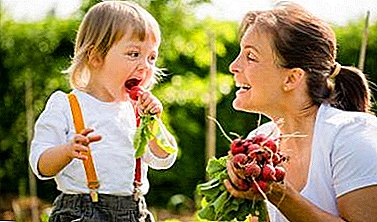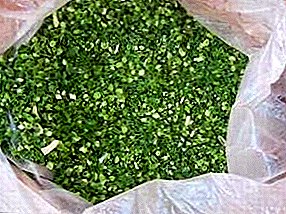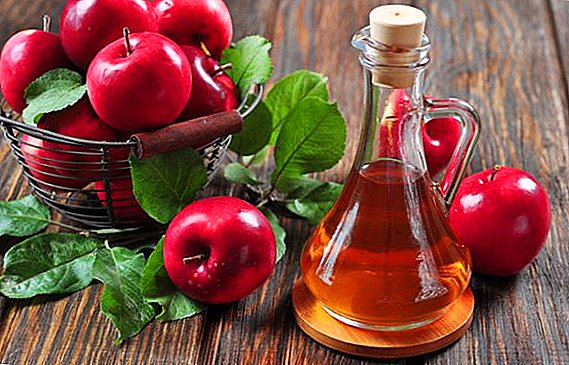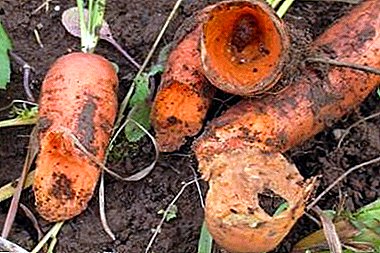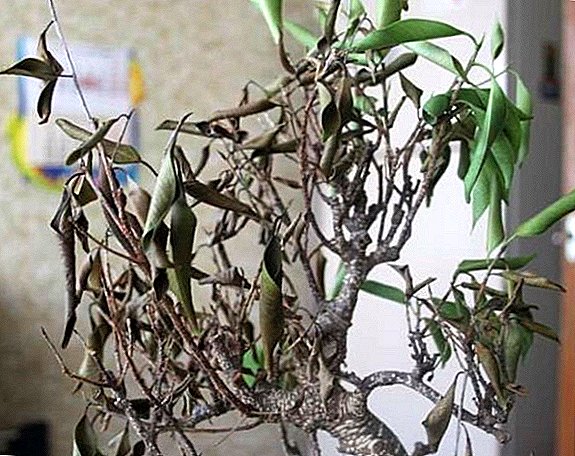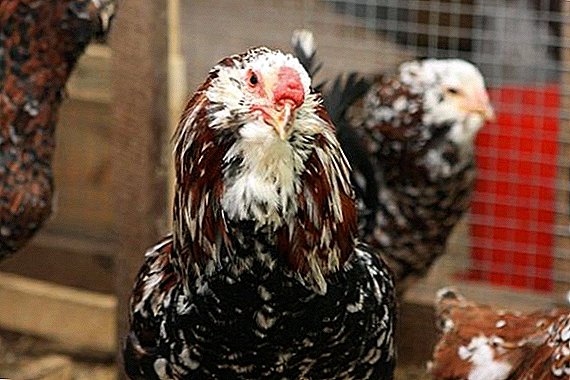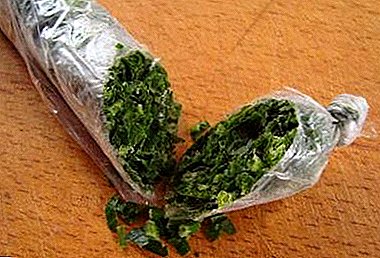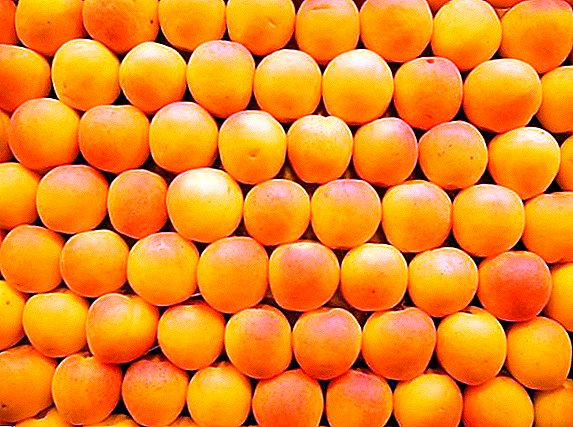 It is considered that apricot is a southern culture. however, gardeners have already found ways to grow this beautiful tree in cool areas.
It is considered that apricot is a southern culture. however, gardeners have already found ways to grow this beautiful tree in cool areas.
The Moscow region - the zone is quite cold, and the frosts here can reach -30 ° C. Due to such climatic conditions, the best varieties of apricots for the Moscow region will be winter-hardy varieties of apricots.
 Temperature fluctuations in the early spring are characteristic of the Moscow region, which can kill even apricots that are resistant to cold.
Temperature fluctuations in the early spring are characteristic of the Moscow region, which can kill even apricots that are resistant to cold.
What kind of varieties are better for picking up on your plot in the Moscow region, as well as their properties and characteristics, we will discuss in this article.
Did you know? For the first time apricots near Moscow were presented to everyone's attention back in 1654 in the Izmailovo Garden.
"Iceberg"
"Iceberg" is a sort of apricot, which was bred in 1986 by A. K. Skvortsov and L. A. Kramarenko. "Iceberg" - early apricot, the fruits of which ripen in late June - early August. The tree in adulthood grows to a small size - only 3 meters, and grows moderately.
The crown of this tree is spreading and strongly branched. Blooms "Iceberg" white large flowers whose diameter reaches 4 cm. The fruits of this species are not too large - 20-22 g, round or oval. The fruit has a thin peel, there may be a mild blush. The surface of the fetus is pubescent.
The fruits are very tender, soft and juicy. The stone is easily separated from the pulp. The fruits of this type can be consumed both in raw and cooked form: jams, compotes, jams. Fruits of a grade "Iceberg" differ in good orezhkost.
Winter hardiness and endurance in this variety is quite high, but in cool rainy periods, the "Iceberg" is prone to the disease of asperiasis (perforated spotting).
 "Iceberg" - a variety with an average yield, but in particularly warm times, the yield can be very high.
"Iceberg" - a variety with an average yield, but in particularly warm times, the yield can be very high.
Fruit "Iceberg" begins in the third - fourth year after vaccination.
"Alesha"
SortAlesha" - early winter-hardy variety capable of self-pollination in the second and third generations. The tree grows up to 4 m, with a rounded sprawling, branched crown.
The color of this variety is large (3.6-4.1 cm in diameter), white with pink veins. The fruits are also large - 18-21 g, the fruit itself is rounded and slightly flattened from the side, with a thin skin.
On the fruit may be a small, dull dot blush and slight pubescence, although the texture itself is smooth and shiny. The fruit ripens in late July - early August and can be used both in raw and cooked form.
The taste of apricot is sweet and sour and rich, and the flesh is tender and juicy.
Important! This species often appears basal shoots that need to be cleaned on time, because because of it, the yield of the tree can be reduced.
This variety is unpretentious and enjoys high popularity among gardeners for the fact that it can be easily transported and stored.
"Hardy"
 The name of this variety was for its resistance to frost and cold, although the tree is quite sensitive to spring temperature drops. The tree of this variety is powerful and large and grows quickly enough. Crohn dense and branchy.
The name of this variety was for its resistance to frost and cold, although the tree is quite sensitive to spring temperature drops. The tree of this variety is powerful and large and grows quickly enough. Crohn dense and branchy.
This variety is representative of the Nikitinsky garden selection. The fruits of this variety ripen late - at the beginning - mid-August, this apricot variety is large-fruited, and the fruits can reach 35-45 g.
The fruits are flat-round, painted in a beautiful, rich golden-orange color with a pronounced blush. A medium-sized stone is easily separated from the pulp, which has a wonderful delicate aroma and rich taste.
The first fruits will appear only 5-6 years after planting a tree. This is a fairly high-yielding variety of apricot and for the season from 60 to 80 kg of fresh fruits can be collected from a single tree, which are great for eating both in cheese and in finished form.
"Aquarius"
Apricot "Aquarius" - the brainchild of the Main Botanical Garden of Russia, derived by A.L. Kramarenko. "Aquarius" - This seedling apricot varieties "Lel". An adult tree with a large crown can reach 6 meters in adulthood.
The tree blooms with very bright white flowers, although the flowers themselves are quite small. On the fruit of the "Aquarius" variety, a distinct seam is visible, and the average weight ranges from 27 to 32 g. The fruit itself is colored yellow with a muffled blush.
 The flesh is medium density fruit and has a very harmonious sweet-sour taste. The small stone is easily separated from the pulp. Apricot "Aquarius" is a fairly disease-resistant tree, but can be amazed. scab - A disease that is caused by a fungus of the family Venturia.
The flesh is medium density fruit and has a very harmonious sweet-sour taste. The small stone is easily separated from the pulp. Apricot "Aquarius" is a fairly disease-resistant tree, but can be amazed. scab - A disease that is caused by a fungus of the family Venturia.
Did you know? Prophylactic apricot treatment in the spring before bud break with a 3% solution of Bordeaux liquid will be a good prevention in solving the problem of scab.According to gardeners, “Aquarius” is an excellent plant for growing in the country and easily adapts to any living conditions.
"Guiana"
Apricot "Guyani" represented by a rather tall and powerful tree with a densely branched sprawling crown. This variety is frost-resistant and unpretentious in care. The yield of this variety at a fairly high level. "Guiana" - samoplodny variety. This tree is fairly disease resistant.
Fruit "Guiana" in the fourth year of growth. The fruits are rather small and grow no more than 20-25 g. The fruits are colored bright yellow and this apricot is red-cheeked. Fruits have a glossy shine and a pointed tip.
The core has a sweet taste, and the flesh itself is sweet-sour and very juicy, and on the whole the taste is very harmonious. The stone is medium in size and perfectly separated from the total mass of the fetus.

The fruits of this variety ripen quite late - in the middle - end of August.
This variety attracts both breeders and amateur gardeners by the fact that it is well kept and well transported, and it is also extremely unpretentious to the growing conditions.
"Countess"
"Countess" - a variety of apricot with an average maturity. Winter hardiness and cold resistance of this variety is much lower than that of other varieties, and this plant is most often exposed klesterosporiozu.
Fruits "Countess" grow to 20-30 g. If the weather is warm and arid, the fruits will be healthy, but during periods of cool and rainy weather, the fruit may be covered with black dots and even a continuous crust of cephaladiasis. The first fruits can be collected as early as 3-4 years after planting.
Important! In late August, you must completely stop watering the tree.The fruit may be round or oval in shape, with a thin, pubescent skin that may be pale yellow or creamy milky in color. The stone is large, makes up 11-12% of the total mass of the fruit and is easily separated from the pulp of a bright orange color and rich taste.
"Zeus"

Apricot "Zeus" represented by not very tall tree, which in adulthood does not exceed three meters.
This species is characterized by moderate disease resistance.
Did you know? "Zeus" - the most frost-resistant apricot.
This variety bears fruit quite well: 20-30 kg of fruits are harvested from one mature tree, and, not least, fruiting from Zeus is regular.
The fruits of this variety are not too large - 20 g. The peel of the fruit is thin and painted in bright yellow color, decorated with a not very bright blurry blush on top. Fruits can be harvested from mid-August.
After planting the first fruits can be collected in the third or fourth year.
"Lel"
"Lel"- This is a variety that starts fruiting in the fourth year after planting. Bred in the State Botanical Garden in 1986. This variety is represented by a tree of medium height (up to 3 m), the branches of which are collected in a small neat crown. Growth is very moderate.
In the autumn season, the leaves of the apricot "Lel" acquire a reddish color. White flowers grow to 3 cm in diameter. Fruit "Lel" for a week or two later than "Alyosha" and "Iceberg."
Fruits with a glossy shine, their weight is 20 g. The fruit is not pubescent, rounded, with oblate sides. The color of the fruit is orange and without blush.
Did you know? Fruits of the "Lel" variety are considered the most delicious, and according to the tasting scale this grade is assigned the maximum grade.
 The only drawback of this variety is a rather large bone, which takes up about 12% of the total mass of the fruit, although the bone is separated very well.
The only drawback of this variety is a rather large bone, which takes up about 12% of the total mass of the fruit, although the bone is separated very well.The fruits of this variety can be consumed both in cheese and in finished form, very often this variety is used to prepare dried apricots.
Red Cheek
"Red-cheeked" - apricot, which is now most often found in the gardens of the Moscow region. The trees of this variety are strong and tall, with a thick, large, powerful crown. A characteristic feature of this variety are rather large fruits, the mass of which can reach 50 g.
The fruit is egg-shaped, with a clear seam of bright orange color and a rather bright blush. The skin of the fetus is dense and not very pubescent. This variety tolerates winter very well and is self-pollinated.
Fruiting begins after 3-4 years of proper care, and if the care is incorrect and inconsistent, the fruits will be much smaller, and the harvest irregular.
The fruits of this variety have a very pleasant smell and sweet taste, although sometimes you can feel the sourness. You can eat and fresh fruit, and cooked. This variety is universal: it is unpretentious to the soil and can be grown in any territory.
"Honey"
 SortHoney" - a tree that can reach 4 meters in height, and this feature makes the harvest process rather difficult. The crown of this tree is quite large and sprawling.
SortHoney" - a tree that can reach 4 meters in height, and this feature makes the harvest process rather difficult. The crown of this tree is quite large and sprawling.
Fruits are yellow, rounded, equilateral. Closer to the top the fruit is covered with small red dots. The skin of the fruit is slightly pubescent, the flesh is quite dense, fibrous and very juicy.
This variety can withstand temperatures as low as -35 ° C. The fruits of this variety are most often used fresh, but jams and compotes are not inferior in taste.
"Monastic"
SortMonastic"was bred in 1996 at the State Botanical Garden. This variety is represented by a vigorous tree with a spreading crown.
Blossoms are not very large white flowers - up to 3 cm in diameter. All types of shoots bear fruit. Most often, the mass of fruits is no more than 30 g, and the yield of the variety is quite high and regular.
Did you know? With very careful care and in good season, the fruit of the variety "Monastyrsky" can reach a mass of 50 g.
 Fruits of uneven shape with a lemon-yellow skin, decorated with a bright blush, slightly pubescent and appear in mid-August (in warmer regions) or in late August (in cooler areas).
Fruits of uneven shape with a lemon-yellow skin, decorated with a bright blush, slightly pubescent and appear in mid-August (in warmer regions) or in late August (in cooler areas).The flesh of the fruit has a rich yellow color and slightly mealy, the taste is sweet and sour, the aroma is not very pronounced. The stone is flat and is 12% of the total mass of the fetus, is separated with little effort.
"Russian"
SortRussian" has the ability to high yields and quite strong winter hardiness and cold resistance. "Russian" - a large tree with a crown of medium size. The tree itself is low, and this simplifies the task of harvesting.
The fruits of this variety are round with "squeezed" sides, painted in bright yellow color with a faint flush. The flesh of bright yellow color is hidden under the slightly pubescent surface and has a very thin, but well-pronounced aroma.
Important! The fruits of this variety are used exclusively raw and unsuitable for processing.
"Northern Triumph"
 SortTriumph of the north" - the result of the crossing of varieties "Northern Early" and "Red-cheeked". Initially, this variety was created for cultivation in the central zone, and this fact makes it difficult for wintering this variety in the Moscow region, although, in principle, it has already been adapted, and this variety suffers the winter quite adequately.
SortTriumph of the north" - the result of the crossing of varieties "Northern Early" and "Red-cheeked". Initially, this variety was created for cultivation in the central zone, and this fact makes it difficult for wintering this variety in the Moscow region, although, in principle, it has already been adapted, and this variety suffers the winter quite adequately.
This variety is represented by a strong-growing tree with a very large, dense and spreading crown, so if you only plan to plant this variety in your garden, then you need to plan it so that the "North Triumph" does not overshadow the rest of the plants.
The fruits of this variety are large, reaching 55 g. The fruits are colored yellow-orange, and from the side that is usually in the shade, a small prozelen is visible, the skin is pubescent.
The orange pulp has a pleasant taste that literally melts in your mouth. The stone is small and easily separated from the pulp.
In some respects, the "Triumph of the North" is weaker than the varieties described above, but this species is no less popular among the gardeners of the Moscow region.
"Favorite"
This variety, unlike the rest, was bred much later, in 2000. Representatives of this variety are medium-height trees that reach a maximum height of 3-4 meters.
It blooms in white, the flowers themselves are of medium size: 3-3.2 cm in diameter. The shoots of this tree are annual and heavily branched. This variety is bearing fruit at the same time as Monastyrsky.
 The fruits of this variety are quite large, reaching 30 g, with a rough, slightly pubescent skin, painted orange with a bright large spot of blush. The flesh of bright orange color has a very rich taste and was awarded 5 points on the tasting scale.
The fruits of this variety are quite large, reaching 30 g, with a rough, slightly pubescent skin, painted orange with a bright large spot of blush. The flesh of bright orange color has a very rich taste and was awarded 5 points on the tasting scale.
The bone of this fruit is quite small - 8% of the total mass, and is well separated from the pulp. Fruits can be consumed both raw and cooked. This variety is fairly well preserved and does not require special care during transportation.
"Tsarsky"
This variety was bred in 1986 in the State Botanical Garden. These are trees of medium height, which in adulthood reach 3-4 meters.
Did you know? White flowers of this variety reach 4 cm in diameter and are considered the largest of all varieties of apricot.The fruits are oval in shape and reach 20-22 g in weight. The skin of this fruit is quite dense, yellow and pubescent. On most fruits can be observed pronounced blush. The flesh of the fruit is very juicy, has a dense texture and has a rich sweet-sour taste.
Stone is 10% of the total mass of the fetus and due to strong juiciness is not always clean is separated from the pulp. Fruits can be harvested after 3-4 years after vaccination. The yield is not very big, but marked by regularity. 
Transportation and storage of fruits do not require special conditions. Fruits can be consumed both in raw and cooked form, even in the preparation of jam, they will retain their flavor and aroma.
"Edelweiss"
Apricot variety "Edelweiss"was withdrawn in 1975. This tree is medium with a spherical crown. The fruits ripen in the middle - end of August. Fruits are round, with slightly flattened sides.
The skin is rather thin, painted in bright light orange color and decorated with orange color with a blush. Pulp with rich sweet-sour taste and pronounced aroma.
This variety produces quite a lot of fruit: one adult tree produces up to 30 kg of crop. The variety is winter hardy and tolerates any risks of disease.
"Edelweiss" has a good drought tolerance. All these factors contributed to the fact that this variety is considered universal and has been repeatedly awarded for its positive properties.
 As you can see, there are many varieties that can easily adapt to your suburban area and make your summer even sweeter. The main thing is to choose a variety suitable for yourself "to taste and color" and give him good care, and the tree will serve you and your family for the joy of many years.
As you can see, there are many varieties that can easily adapt to your suburban area and make your summer even sweeter. The main thing is to choose a variety suitable for yourself "to taste and color" and give him good care, and the tree will serve you and your family for the joy of many years.



